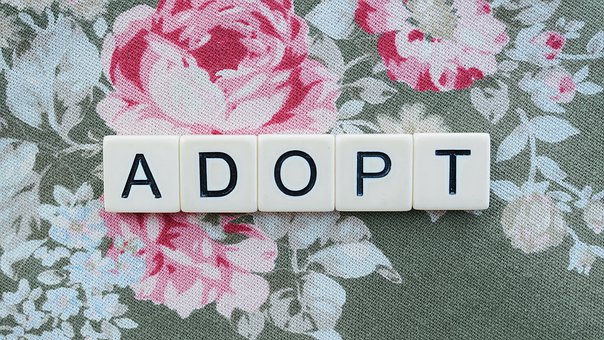A ‘fact finding hearing’ does what it says on the tin. It’s the way in which the civil courts attempt to find out what happened when people disagree about the facts. Or, to be more accurate, it ‘finds’ facts on the balance of probabilities, which is the civil standard of proof. So if the Judge reads the court papers and hears people give evidence and be questioned, then thinks that something is 51% more likely to have happened than not, you will get your finding.
There is a curious narrative in the family justice system that this system establishes the ‘truth’ and that children are entitled to it. I agree that children have a right to know what happened to them – who hurt them and why – but I have often argued that we need more realism about the nature and limitations of the fact finding process.
In 2016 I said for a post for The Transparency Project
I can find only one mention in the judgment – at para 22 – to the fact that ‘the Truth’ will be determined in any rehearing on the balance of probabilities. The usual civil standard. Meaning more than 51% likely. I apologise if I have missed any further reference to this low civil standard – but certainly by para 27 it has vanished in the mist and what we have now is:
“the re-hearing must proceed so that the truth, whatever it turns out to be, can be ascertained, finally and definitively, in the light of all the evidence now available.”
I am very troubled by this. My concerns about the weight the ‘balance of probabilities’ is often asked to bear was explored in the discussions had by The Transparency Project, regarding the Ellie Butler case. I pointed out that to attempt to ‘exonerate’ someone on such a low standard of proof was unwise. I appreciate that findings must be made and must be considered definitive. But to go further and chase such findings as ‘exoneration’ and ‘the TRUTH’ is asking far, far too much of the balance of probabilities.
The Judgment and some of the arguments have a curious, naive air. That this rehearing will find The Truth, which will be crucial to X as he or she grows. X NEEDS an ‘accurate narrative’ of how his or her adoption came about. Seriously? How many of us have an ‘accurate narrative’ of our formative years. How many different choices, chances, perspectives, denials, hopes, dreams, fantasies and delusions have gone into making us who we are? Who is naive or arrogant enough to think they know The Truth?
I therefore do not accept that a fact finding hearing is a way to unmask the ultimate ‘truth’. However, I accept there must be some way of dealing with disputed allegations and identifying the agreed facts which will inform any decision made about the child’s welfare. Regardless of any unease about the process, you will arrive at something which from then on the court (and everyone else you have dealings with) must accept as objectively true. If you don’t prove your allegations, they are treated as never having happened.
So what happens if people are arguing about the need for a finding of fact? This can be a really serious and important issue in cases involving allegations such as violence or sexual abuse. The police may have decided to take no further action, if they and the CPS think it unlikely to get a conviction in a criminal court – which operates to a much higher standard of proof.
But the adult who is accused wants to be part of the chid’s life. How should the family court approach these cases?
The Family Procedure Rules 2010.
We start here. The ‘over-riding objective’ of the Family Procedure Rules is to deal with cases justly.
Dealing with a case justly includes, so far as is practicable –
(a) ensuring that it is dealt with expeditiously and fairly;
(b) dealing with the case in ways which are proportionate to the nature, importance and complexity of the issues;
(c) ensuring that the parties are on an equal footing;
(d) saving expense; and
(e) allotting to it an appropriate share of the court’s resources, while taking into account the need to allot resources to other cases.
Rule 1.4(a)(c)(i) provides that, in furthering the overriding objective by actively managing cases, the court should decide promptly which issues need full investigation and which do not.
Rule 4.1(2)(l) permits the court, in the exercise of its general powers of management, to exclude an issue from consideration.
Case law
It is ultimately a matter for the court’s discretion as to whether a finding of fact is needed. The court decides what facts are necessary to be found and the court may disagree with any party’s perception. You can appeal against such a case management decision but the time limits are shot and strict.
The authorities mirror the overriding objective and the relevant considerations can be summaries as:
- The interests of the child (which are relevant but not paramount)
- The time that the investigation will take
- The likely cost to public funds
- The evidential result
- The necessity or otherwise of the investigation
- The relevance of the potential result of the investigation to the future care plans for the child
- The impact of any fact finding process upon the other parties
- The prospects of a fair trial on the issue
- The justice of the case.
McDonald J at said at 242 in Re P (Sexual Abuse – Finding of Fact Hearing) [2019] EWFC 27
The fact that the complainant children have made allegations of sexual abuse does not create a rebuttable presumption that the allegations are likely to be true. An allegation is only an allegation, and the burden remains on the local authority to prove that the allegations made by the children are established to the requisite standard of proof
Other relevant cases are:
Re G (A Minor) (Care Proceedings) [1994] 2 FLR 69
Stockport Metropolitan BC v D [1995] 1 FLR 873
Re B (Agreed Findings of Fact) [1998] 2 FLR 968
Re M (Threshold Criteria: Parental Concessions) [1999] 2 FLR 728
Re D (A Child) (9 August 2000)
Lincolnshire County Council v CB & Ors [2021] EWHC 2813 (Fam) (21 October 2021) – short examination of the relevant law and principles; decided that a 20 day finding of fact was not necessary.
In a case involving allegations of sexual abuse, the court will look carefully at the credibility and reliability of the allegations and in particular if there has been compliance with best practice over interviewing children. There is a good examination of this in Re P above, which notes that allegations of child sex abuse create’ particularly acute forensic difficulties’ for the family courts.
Interventions by well meaning adults can often corrupt a child’s evidence beyond rescue and it is very important to adhere to the good practice around ‘Achieving Best Evidence’. Many children are susceptible and wish to please adults – they may end up saying what the adult wants to hear.
It is essential that clear and contemporaneous records are kept of what a child says, but a child should not be subject to repetitive questioning.
Getting it wrong in a case of child sex abuse has really serious consequences as Re P noted:
The consequences of the court reaching the wrong conclusion in respect of an allegation of child sexual abuse include a child being returned to a position of danger or, conversely, a child being deprived of a family that is, in fact, perfectly safe. In the circumstances, when determining whether sexual abuse has taken place and, if so, who is responsible for perpetrating that abuse, it is vital that the court remain acutely conscious of the forensic difficulties outlined above. As Holman J observed in Leeds City Council v YX & ZX (Assessment of Sexual Abuse) 2008 EWHC 802 (Fam) the task of the court in cases of this nature is not so much akin to putting together a single jigsaw puzzle in which all the pieces are present, but rather:
“If the jigsaw metaphor is helpful at all, then, in my view, it is important to think of a pile of jigsaw pieces in which pieces from more than one jigsaw have been muddled up. There may be pieces which, on examination, do not fit the jigsaw under construction at all, but which require to be discarded or placed on one side.”
Knowles J considered the relevant legal factors to decide whether to discontinue with a fact- finding hearing in Re X (Care Proceedings: Jurisdiction and Fact Finding) (Rev 1) [2020] EWHC 2742 (Fam) – see Para 79- 82
He cited with approval Re C (Family Proceedings: Case Management) [2012] EWCA Civ 1489, where Munby LJ (as he then was) distinguished family proceedings from civil proceeding in this way (paras [14] –[15]):
“[14] … But these are not ordinary civil proceedings, there they are family proceedings, where it is fundamental that the judge has an essentially inquisitorial role, his duty being to further the welfare of the children which is, by statute, his paramount consideration. It has long been recognised – and authority need not be quoted for this proposition – that for this reason a judge exercising the family jurisdiction has a much broader discretion than he would in the civil jurisdiction to determine the way in which an application of the kind being made by the father should be pursued. In an appropriate case he can summarily dismiss the application as being, if not groundless, lacking enough merit to justify pursuing the matter. He may determine that the matter is one to be dealt with on the basis of written evidence and oral submissions without the need for oral evidence. He may, as His Honour Judge Cliffe did in the present case, decide to hear the evidence of the applicant and then take stock of where the matter stands at the end of the evidence.
[15] The judge in such a situation always be concerned to ask himself: is there some solid reason in the interests of the children why I should embark upon, or, having embarked upon, why I should continue exploring the matters which one or other of the parents seeks to raise. If there is or may be solid advantage to the children in doing so, then the enquiry will proceed, albeit it may be on the basis of submissions rather than oral evidence. But if the judge is satisfied that no advantage to the children is going to be obtained by continuing the investigation further, then it is perfectly within his case management powers and the proper exercises of his discretion so to decide and to determine that the proceedings should go no further.“
Conclusions
As with so much in family law, you need to deal with the case before you. Previous authorities can guide you and provide a useful checklist of what you need to be thinking about, but they cannot make the decision for you. Different people may reasonably hold different views about the importance or need for a finding of fact and it is up to the Judge to decide. The courts are motivated to avoid separate findings of fact as they cause delay and may prefer to deal with findings of fact and welfare issues at one composite final hearing, even if this does mean preparing the case on an ‘either/or’ basis.
Clearly, the more serious the allegations, the more recently they happened and the greater the kind of involvement in the child’s life the accused adult wants to have, the greater the need for a finding of fact.
And never forget, once those findings are made, you are stuck with them, unless you can successfully appeal or persuade the court to grant a re-hearing.









